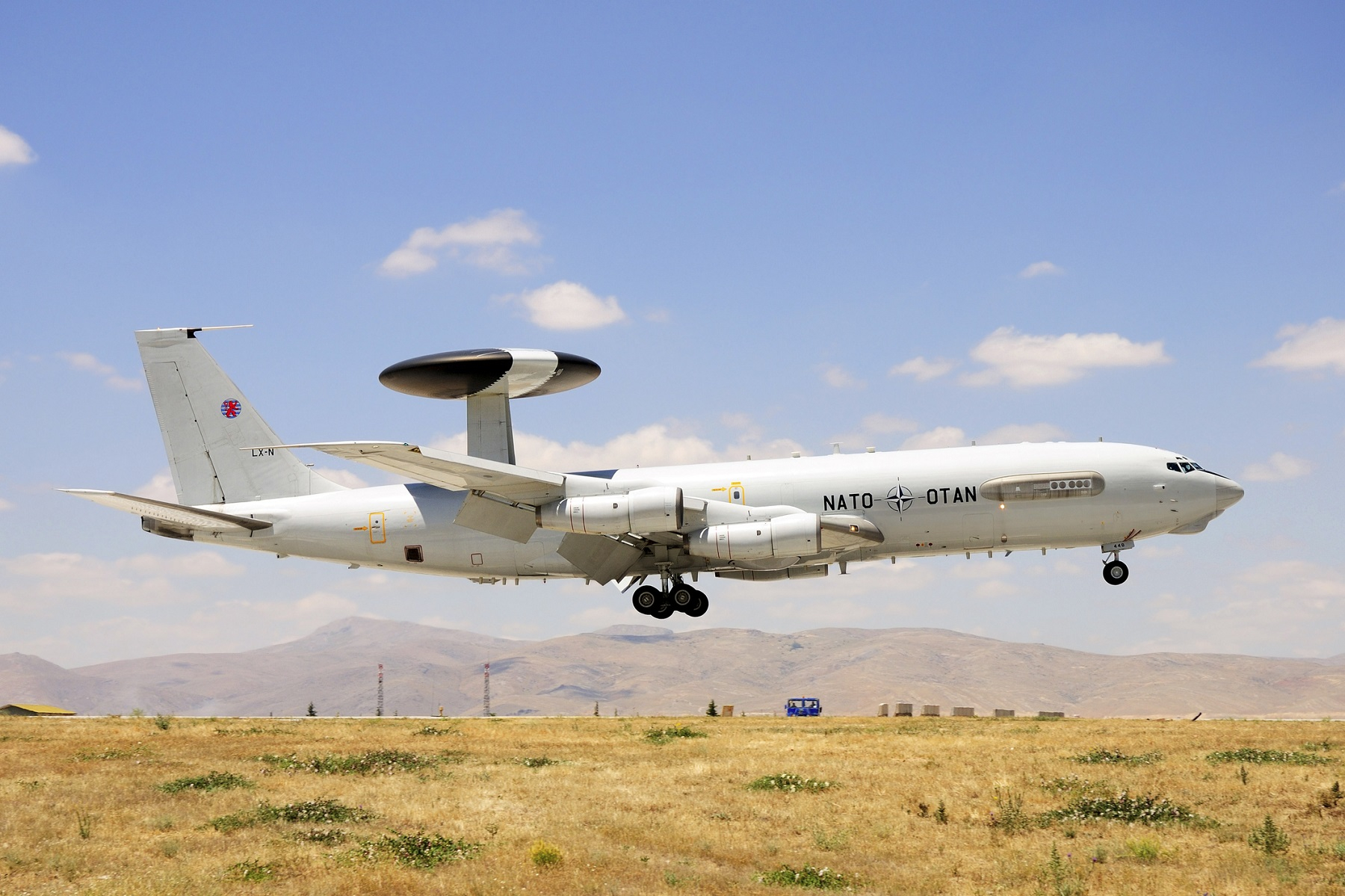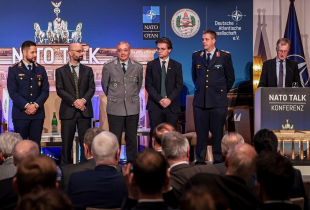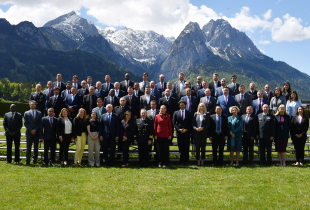
European Security Seminar EU – NATO Cooperation: Seminar Report
Introduction
From January 11-15,2021, the George C. Marshall European Center for Security Studies conducted for the first time a European Security Seminar (ESS) on EU-NATO cooperation. Due to COVID-19 restrictions, the seminar took place virtually. Fifty-eight participants from twenty-seven countries attended the event via online seminars. The participants represented EU and NATO member states, countries that are solely NATO or EU members, non-aligned states, as well as befriended countries, and countries along Europe’s southeast and eastern flanks. A little more than two-thirds of the attendees were civilian officials; approximately one-third of the participants were female.
The major goals of the ESS were to understand the new impetus and substance of EU-NATO strategic partnership, to explore selected areas where cooperation between EU and NATO organizations should be enhanced, and to identify how NATO, the EU, Germany, and U.S. can strengthen the capacity and capability of its neighbors, potential EU and NATO partners, while being mindful of constant hostile interferences by revisionist powers and the multi-faceted challenges that the COVID-19 pandemic presents to societies. To this end, the Marshall Center organized seven units of panels and lectures with experts and senior officials from the Brussels-based institutions as well as national governments, followed by outcome-oriented seminars for smaller groups. The Chatham House Rule (i.e. non-attribution of any statements made) was respected throughout the course.
Background and History
The introductory speakers elaborated on the first Joint Declaration, signed on July 8, 2016 by the President of the European Council and the President of the European Commission, together with the Secretary General of the North Atlantic Treaty Organization in Warsaw. The reasoning behind this declaration was that the strategic environment, facing unprecedented challenges emanating from the South and the East, called for cooperation between the EU and NATO. The presenters then turned to the subsequent Declaration, signed in Brussels July 10, 2018, which called for swift and demonstrable progress in implementation.
The 2016 declaration outlined seven concrete areas where cooperation between the two organizations should be enhanced: 1. countering hybrid threats; 2. operational cooperation including at sea and on migration; 3. cyber security and defense; 4. defense capabilities; 5. defense industry and research; 6. exercises; and 7. supporting Eastern and Southern partners’ capacity-building efforts. ESS participants learned that several informal working relationships have already been established. Following initial discussions, involved experts from both organizations identified seventy-four action points across those seven areas. The presenters pointed out that cooperation showed remarkable progress in some areas, whereas enhanced cooperation was lacking in others.
Subsequent discussions with participants revealed that many remain perplexed about why it took the Ukraine crisis in 2014 to encourage the EU and NATO to open a new chapter of cooperation. Overall, the two institutions are seen as natural allies to defend the broader transatlantic space, a rule-based order, and the community of liberal-minded countries. In simplified terms, complementarity and workload sharing are regarded as leaving NATO the primary responsibility for collective defense and hard security while the EU assumes a growing role within civilian crisis management and soft security. NATO is perceived as having maintained its essence as a political-military alliance since 1949. In contrast, what is now the European Union was launched a few years later as a coal and steel community and then progressively evolved toward greater economic and security integration.
Capability Development
This ESS concentrated in its first iteration on three fields of concrete EU-NATO cooperation: capability development, hybrid threats, and military mobility. The invited EU and NATO experts emphasized that the 2016 EU-NATO Joint Declaration listed an urgent need to “develop coherent, complementary and interoperable defense capabilities of EU Member States and NATO Allies, as well as multilateral projects.” This mirrors the ambition of the 2016 EU Global Strategy to deter external threats and to pursue an autonomous ability to safeguard security both within and beyond Europe’s borders. Capability development seems to be the most complex and institutionally difficult area in which to achieve true collaboration. In addition, capability development is linked with the issue of inclusion (or exclusion) of national defense industries. Accordingly, joint armament projects need to take political sensitivities into account. While some progress in cooperation in terms of sharing planning parameters and in other areas has been achieved, it is not seen as fully satisfactory.
Participants discussed whether capability development presupposes a military doctrine at the national level first. Depending on history, geography, and political orientation, this seems to differ across the European continent. In addition, capability development seems to be difficult with limited resources; it would be helpful if the EU and NATO would share a common understanding concerning the use of force. In this light, they underlined that NATO is meant to respond instantly, whereas the EU—as a peace project—is designed to seek cooperation.
Hybrid Threats
The course also examined the Helsinki-based European Centre of Excellence for Countering Hybrid Threats (HybridCoE) as a concrete illustration of EU-NATO cooperation within an area that has become an integral part of the European security environment. While definitions differ, hybrid threats are a broad, complex, and adaptive combination of conventional and nonconventional means that include overt and covert military, paramilitary, and civilian measures employed in a highly-integrated design by state and non-state actors who often aim to undermine the transatlantic community. The presenter underlined that the center of gravity constantly changes when an adversary applies hybrid measures against a country and its allies. The focus may change rapidly from international attention to domestic affairs and/or from perceived military threats into the cyber domain. Accordingly, the HybridCoE was set up as an international, independent network-based organization promoting whole-of-government and whole-of-society approaches against such threats. It is now one of the most visible and concrete achievements of EU-NATO cooperation.
The participants also discussed whether some recent Kremlin-generated hybrid activities would fit under the discussed definitions and how governments can best cope in the face of such challenges. An indispensable condition seems to be awareness and then readiness. Some attendees complained that awareness has not yet even reached the national level in some cases. The issue as a whole underlined the significance of resilience as an area for further cooperation.
Military Mobility
Speakers from the EU, NATO, and one member state also shared insights on military mobility, which NATO Secretary General Jens Stoltenberg and others frequently refer to as the “flagship” of EU-NATO cooperation. Enhancing military mobility carries particular importance concerning the threat along Europe’s eastern and Baltic flanks, hence the need for NATO troops and equipment to transit effectively to and across Europe dates back to 2014 (and before). The speakers explained the legal and regulatory aspects, which brought the EU into the enhancement of military mobility. They also emphasized the need to ensure NATO movements and rotations as part of the NATO Response Force (NRF) and the Very High Readiness Joint Taskforce (VJTF). Overall, the speakers hailed some progress when it comes to NATO-EU coordination on military mobility. However, they also stressed that further enhancement of that cooperation depends on dedication by the organizations’ member states.

COVID-19
Given their topicality, EU and NATO responses to the COVID-19 pandemic were also put on the agenda. A key starting point was how the outbreak of the pandemic in early 2020 caught the international community by surprise. Discussion also emphasized Beijing’s and Moscow’s role in launching various propaganda campaigns to insinuate that western governance models would fail to protect their countries’ citizens. In the meantime, the European Council agreed on a multibillion Euros recovery package in summer 2020, while NATO extensively supported rescue and humanitarian operations.
Most ESS participants concluded there could have been more visible joint action against the pandemic and related hostile propaganda, especially at the outset. The Chinese and Russian disinformation campaigns were partly seen as successful, and when combined with national difficulties, this foreign interference often weakened public trust in member states’ societies. However, due to its values, the western-minded community does not have similar tools to counteract this interference. Many attendees agreed more emphasis must be placed instead on education to counter foreign influence attempts. In this regard, critical thinking classes at Finnish schools were mentioned as an example.
Transatlantic Relations
The concluding session of this ESS was designed to assess the status of EU-NATO cooperation through the lens of the general transatlantic relationship. The Marshall Center’s stakeholder countries, the United States and Germany, both regard NATO and the EU as transatlantic cornerstones and thus encourage deepening security-related cooperation between these organizations. Particular issues included Germany’s recently-ended Presidency in the European Council; the difficulty of the times in which this took place meant that Germany could not enhance cooperation between the two organizations as much as they would have liked to. Berlin’s EU presidency was in effect kidnapped by the coronavirus and hence, the government concentrated on finding joint solutions to mitigate the virus’s impact. This included the much criticized common vaccine purchase approach, which was justified by COVID-19’s nature, which ignores borders as well as Germany’s dependence as an export nation on free movement through the single market space. Attention was also given to the change of presidential administration in Washington and various optimistic statements about a Euro-American rapprochement. Nevertheless, some areas of transatlantic disagreement (e.g. unbalanced defense spending, Nord Stream 2, a common position vis-à-vis China and Russia) may remain challenging to resolve under a new U.S. President.
Additional Topics
Brexit was also discussed in seminars, with most participants agreeing that even outside the EU, the United Kingdom remains an indispensable cornerstone for the defense of the transatlantic space. Some mourned the fact that Brexit removed a frequent veto actor within the CFSP/CSDP. Others fear that some EU member states who had previously hidden behind British opposition could now challenge an emerging EU security policy. Berlin was applauded for meditating a last-minute deal in late 2020 to allow a smooth Brexit that can help continue to tie the UK to the continent’s overall security.
Seminar-attendees also discussed EU and NATO-backed capacity building efforts in third states. Coordination and complementarity are perceived as especially complicated when EU and NATO launch missions within the same territory (e.g. Mali, Afghanistan, and Kosovo). Mission staff and local populations do not understand such missions’ varying mandates, which impact the ability to coordinate amongst the various actors. ESS participants strongly recommend deconflicting overlapping mandates at the Brussels level.
Summary
Overall, participants concluded that EU-NATO cooperation is progressing; it has become significantly more regularized since 2016. The current state of affairs between the organizations is fortunately not all comparable with the relationship a decade ago, when scholars labeled the interaction between the institutions as a “frozen conflict.” NATO and the EU should be encouraged to focus on public awareness; for instance, they should publicize success stories of concrete cooperation for domestic audiences.
Some speakers and participants agree that there is still a “glass ceiling” of restrictions by member states that hamper enhancement. Some may result from the varying political domestic landscapes in member states, while other constraints are of mixed technical-political nature, such as sharing classified information. Most representatives of EU and/or NATO member states would welcome it if the institutions’ cooperation would deepen and a common threat perception would take shape. Where there is stalemate, member states themselves rather than the organizations receive the most blame.
It is noteworthy that representatives from partner states outside both organizations would especially welcome increasingly thorough cooperation in the agreed areas as likely to become the new normal. This could create more coordinated capacity-building for their respective security structures. Their proximity and sustained subjection to malign influence from Russia led these countries to hope that enhanced EU-NATO cooperation could also lead to stronger extended deterrence.
For Academic Citation
Sebastian von Münchow and Matthew Rhodes, “European Security Seminar EU – NATO Cooperation: Seminar Report,” Marshall Center Security Perspectives, no. 22, June 2021, https://www.marshallcenter.org/en/publications/perspectives/european-security-seminar-eu-nato-cooperation-seminar-report-0.
About the Authors
Dr. Sebastian von Münchow is the Course Director of the European Security Seminar – East and a member of the faculty at the Marshall Center.
Dr. Matthew Rhodes is Chair of the Area Studies Department and a professor of national security studies at the Marshall Center.
The George C. Marshall European Center for Security Studies
The George C. Marshall European Center for Security Studies in Garmisch-Partenkirchen, Germany, a German-American partnership, is committed to creating and enhancing worldwide networks to address global and regional security challenges. The Marshall Center offers fifteen resident programs designed to promote peaceful, whole of government approaches to address today’s most pressing security challenges. Since its creation in 1992, the Marshall Center’s alumni network has grown to include over 14,400 professionals from 156 countries. More information on the Marshall Center can be found online at www.marshallcenter.org.
The articles in the Perspectives series reflect the views of the authors and are not necessarily the official policy of the United States, Germany, or any other governments.

